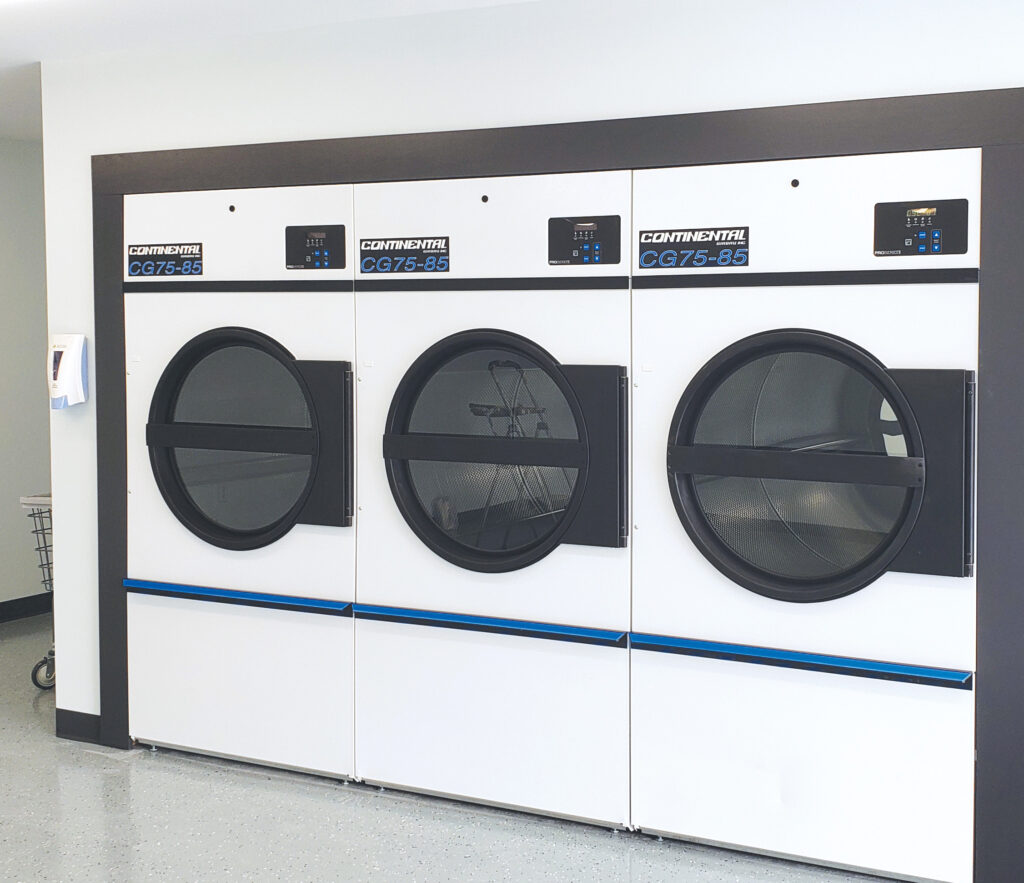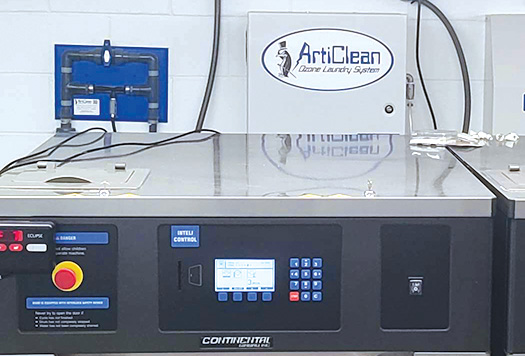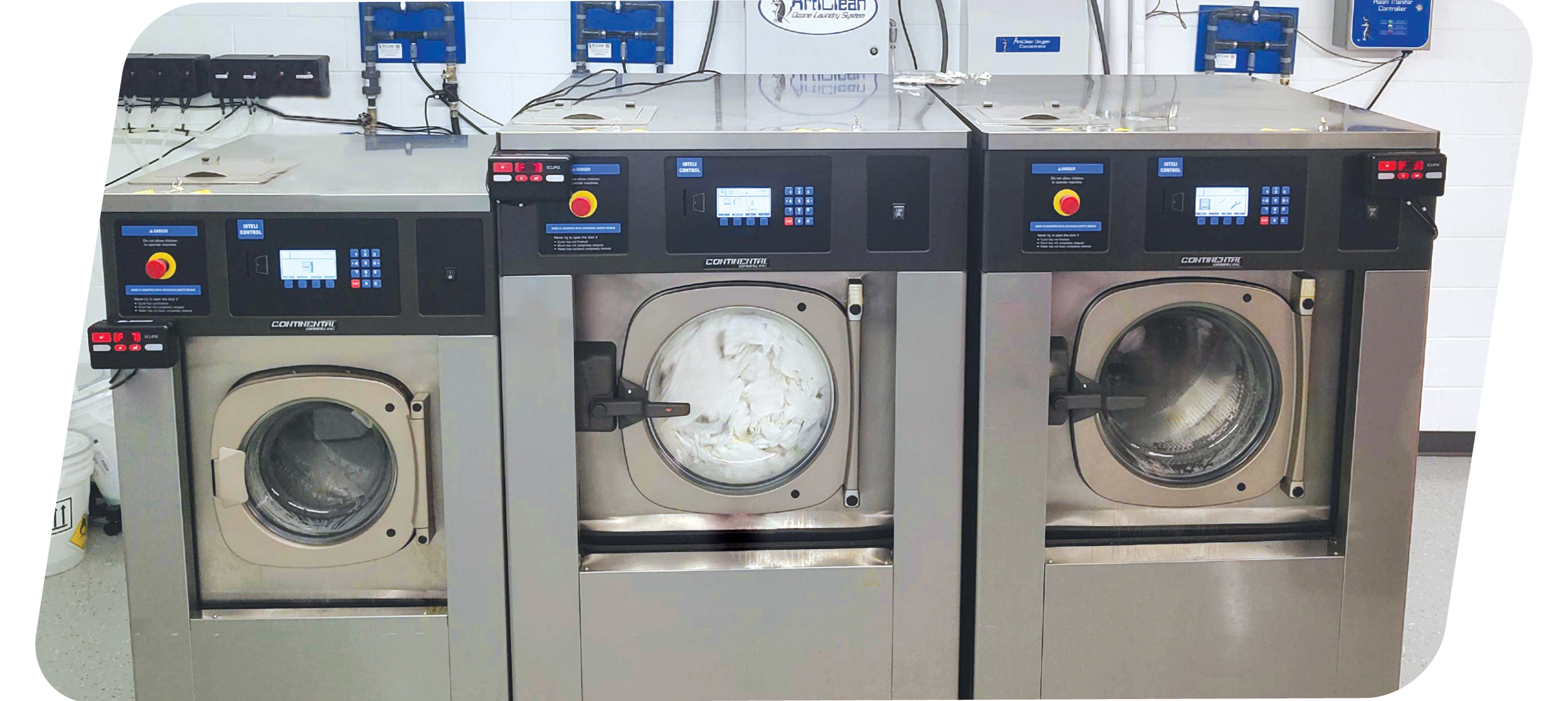After outsourcing laundry for years, Pratt Regional Medical Center (PRMC), in Pratt, Kan., developed its own off-site laundry capable of processing and sanitizing more than 1,000 laundry pounds per day. The $300,000 laundry investment — which proved considerably more efficient and cost-effective than outsourcing — paid for itself in 18 months, cut linen volume loss in half, and toppled cost per pound. The icing on the cake? A built in Disinfection Monitoring Package (DMP) verifies that the sanitization of all hospital laundry is achieved.
Vended Laundry to Hospital Laundry
Paul Carrington, PRC director of quality and infection control, explored the strategic move to develop the laundry with help from Matt Samms and Brian Asher of Commercial Laundry Sales and Service, a full-service laundry equipment distributor, in Wichita, Kan. “We saw an opportunity of being able to do the laundry really well and bring more jobs back to the community,” said Carrington. “Matt and his team were very helpful at every stage. They came on site and discussed laundry usage, workflow and equipment,” he added.
Ultimately, an old vended laundry in the community was reconfigured with a new hospital-grade layout and highly productive and programmable Continental Girbau E-Series Washers (a 30- and two 60-pound capacity models) and ProDry2+ Dryers (three 75-pound capacities), and an Articlean Ozone System. The laundry was designed to comply with Centers for Disease Control (CDC) guidelines, according to Samms and Carrington. “There’s a dirty side, where sorting and washing takes place, and a clean side for drying and folding,” said Samms.

Continental Washers & Dryers plus Ozone
To ensure all laundry is properly sanitized, an Articlean Ozone System works in concert with the E-Series Washers to automatically combine ozone and cold water. The washers are high-speed, soft-mount machines, which don’t require bolt-down and reach extract speeds of 400 G-force. The high extract removes more moisture from every load, which in turn shortens dry time by as much as 50 percent. The result is improved productivity and lower natural gas costs.
Each washer, which is programmed for specific items — incontinence pads, sheets, blankets, gowns or towels — precisely controls every aspect of the wash cycle, including water temperature by degree, number of baths and rinses, wash rotation speed and duration, water levels, bath cool-down by degree and extract speeds. Detergents, softeners and ozone are automatically injected into the wash cycle, at the right time and water temperature, according to the program selected.
“With every cost variable calculated in, we achieved ROI in just 18 months. When we outsourced, we paid $1 per pound. Today our cost per pound varies between 35 and 50 cents.”

DMP Verifies Sanitization
During the wash cycle, the DMP — an optional washer feature — automatically verifies that disinfection parameters and pre-established washing requirements are performed without error during the wash cycle. If something goes awry, the DMP alerts Carrington with an alarm. “For every cycle, I need a minimum of 10 minutes of cold ozonated water exposure for sanitization,” he said. “With the DMP, I can be certain that’s happening.”
Once washed and sanitized, linens are transferred to the “clean” side of the laundry and dried using the laundry’s ProDry2+ moisture-sensing dryers. Then they are hand-folded and loaded into clean carts for distribution at the hospital.
The other DMP benefit is its seamless integration with Sapphire, a remote, cloud-based laundry management system. Sapphire allows Carrington to remotely monitor and manage laundry efficiency. “I pull up Sapphire each day and can see delays between starting and ending cycles, the length of cycles and how to maximize efficiency. We were washing the large flat items, like sheets and blankets, in all of the machines with a 45minute cycle length. But, I saw through Sapphire that that was delaying all of the shorter cycle items like towels and comforters. By designating one washer for flat items, we were able to get in more cycles in an 8-hour shift.”
Results Couldn’t Be Better
As an infection control specialist, Carrington regularly tests the hospital’s cleaned textiles using an ATP test, measures residual organic debris and microbes through detection of adenosine triphosphate. “When outsourced, it was common to have finished linen with measurements of ATP in the range of 30-60 RLU,” he said. An acceptable level for hard surface is less than 25 RLU. With the new laundry, our numbers are between zero and three. I’ve done microbiologic cultures as well and they are coming back with nothing.”
The linens are cleaner, fresher smelling and sanitized, according to Carrington. Plus, the whole process costs significantly less than outsourcing.
“With every cost variable calculated in, we achieved ROI in just 18 months,” said Carrington. “When we outsourced, we paid $1 per pound. Today our cost per pound varies between 35 and 50 cents.” The other positive is a major savings on disposable isolation gowns. “Prior to the Covid-19 outbreak we made a decision to use reusable gowns,” said Carrington. “During the peak of the pandemic, we laundered all of our reusable gowns each day for a savings of $80,000 compared to using disposables.”

